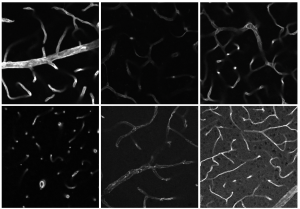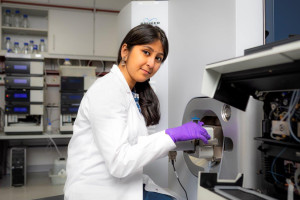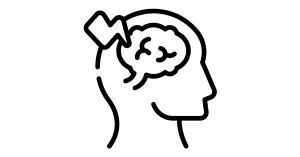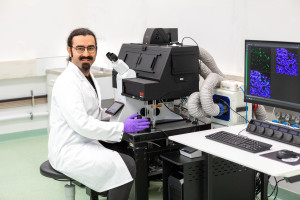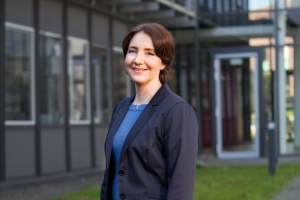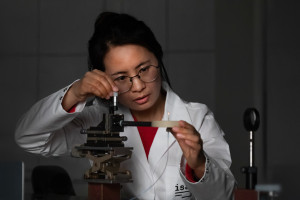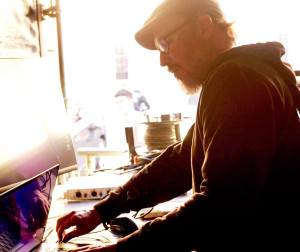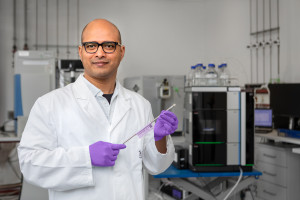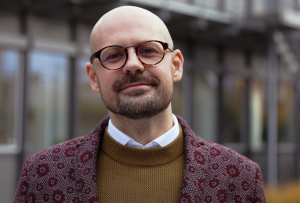Dortmund, 15th December 2022
For newborn screening, time plays a crucial role in identifying certain endocrine or metabolic disorders. With a few drops of blood shortly taken after birth, the detection of diseases like the so-called adrenogenital syndrome, an endocrine disorder in the adrenal cortex, or the rare genetic disease mucoviscidosis is possible. The faster the babies receive a diagnosis, the better the chances to counteract, for example, organ damage, developmental disorders or mental disabilities. This is why Dr Marcos Bouza Areces from the University of Jaén (Spain) came to the Leibniz-Institut für Analytische Wissenschaften – ISAS – e.V. At ISAS, he wants to find out how to speed up the screening with the help of plasma-based ionisation sources. Because the 36-year-old’s project could possibly provide important findings for new screening methods, the European Union (EU) supports his research with a fellowship of its Marie Skłodowska-Curie Actions.
Marcos, why does every minute count for newborn screening?
Bouza Areces: If untreated in newborns, some endocrine or metabolic disorders can lead to mental disability, coma, and some possibly even to death. In case of the adrenogenital syndrome, the adrenal cortex produces, for example, too little aldosterone. Because this hormone plays an important role in regulating the body’s level of salt, this endocrine disorder can lead to shock or even coma. If untreated, coma is also one of the possible outcomes of the so-called maple syrup urine disease. There are also other disease like mucoviscidosis, where an early diagnosis and therapy can improve the infants’ life quality and expectancy.
How does a newborn screening work?
The newborn screening is a blood test that takes place 36 to 72 hours after birth. Therefore, the baby’s heel is pricked. A few drops of blood are then collected on filter paper. The filter paper enables an easy sample storage and transport to the laboratory. There, the blood analysis is conducted to reveal specific endocrine and metabolic diseases. The screening is important because newborns often hardly show any symptoms after birth although they are ill. In Germany, the newborn screening has existed since 1969. In the beginning, the test only included the metabolic disease phenylketonuria – now, 19 diseases are part of the screening.

Using the mass spectrometer, Dr Marcos Bouza Areces examines animal blood samples directly on the filter paper for indications of a metabolic disorders.
© ISAS
How did the idea of speeding up the screening occur to you?
Bouza Areces: Diseases like the adrenogenital syndrome have a short time window for an initial therapy. In case like this, hours are a long time. Today, parents have to wait several hours for the screening results. If my project is successful, it could reduce the waiting time to a few minutes.
In order to perform the screening, a mass spectrometer is used. For the analysis, the blood samples are ionised, meaning they are converted into charged gaseous particles. This is necessary to analyse the gas particles with the mass spectrometer. The result is information on the types and amount of molecules, for example amino acids which for example regulate multiple metabolic effects. The information provide physicians with insights into diseases.
Until now, the blood samples have to undergo various preparation steps before their analysis in the mass spectrometer. That is how substances that are irrelevant for the analysis or which would lead to inaccurate measurements can be removed from the sample. This procedure can take several hours. To save time, I want to analyse the complete sample directly on the filter paper – without preparing it in a time-consuming process.
Why did you choose ISAS for your research stay?
Bouza Areces: For my analysis, I have so far focused on metabolic disorders. One of my target molecules is phenylalanine which is an amino acid. So-called plasma-based ionisation sources are an important part of my method. At ISAS, researchers like PD Dr Joachim Franzke are specialised on miniaturised plasmas for analytical chemistry. I wanted to use this expertise for my research.
Which analytical methods did you apply for the screening?
Bouza Areces: I tested different ionisation methods at ISAS. First, I tried to analyse dried cow blood directly on the filter paper by using electrospray ionisation. However, the results of these experiments were not satisfying. Besides target molecules like phenylalanine, the mass spectrometer detected many other molecules in the sample due to the missing preparation process. After that, I used the Flexible Microtube Plasma (FμTP) that was developed at ISAS. The initial results were promising. To continue my experiments, I would like to return to ISAS.
Besides the newborn screening: could a direct sample analysis with the FμTP be usable for other diagnostic purposes?
Bouza Areces: Apart from blood, a time-saving analysis of other biological fluids like urine could be possible. That would enable fast doping tests.
What are Marie Skłodowska-Curie Actions?
The goals of the Marie Skłodowska-Curie Actions (MSCA) are to support European scientists on a personal and professional level and to increase the appeal of Europe as a science location. Since 2014, “Horizon Europe” has been the EU’s key funding programme for research and innovation. Besides experienced researchers, junior scientists as well as employees in the research and innovation sector can participate in the programme that is open to all domains of research. Pan-European research stays of the participants are an important aspect of the MSCA. A postdoctoral fellowship supports the researchers, for example, with a monthly salary as well as an allowance for travel expenses. The exact amount of funding depends on the EU member state.
(The interview was conducted by Bettina Dirauf & Sara Rebein.)
